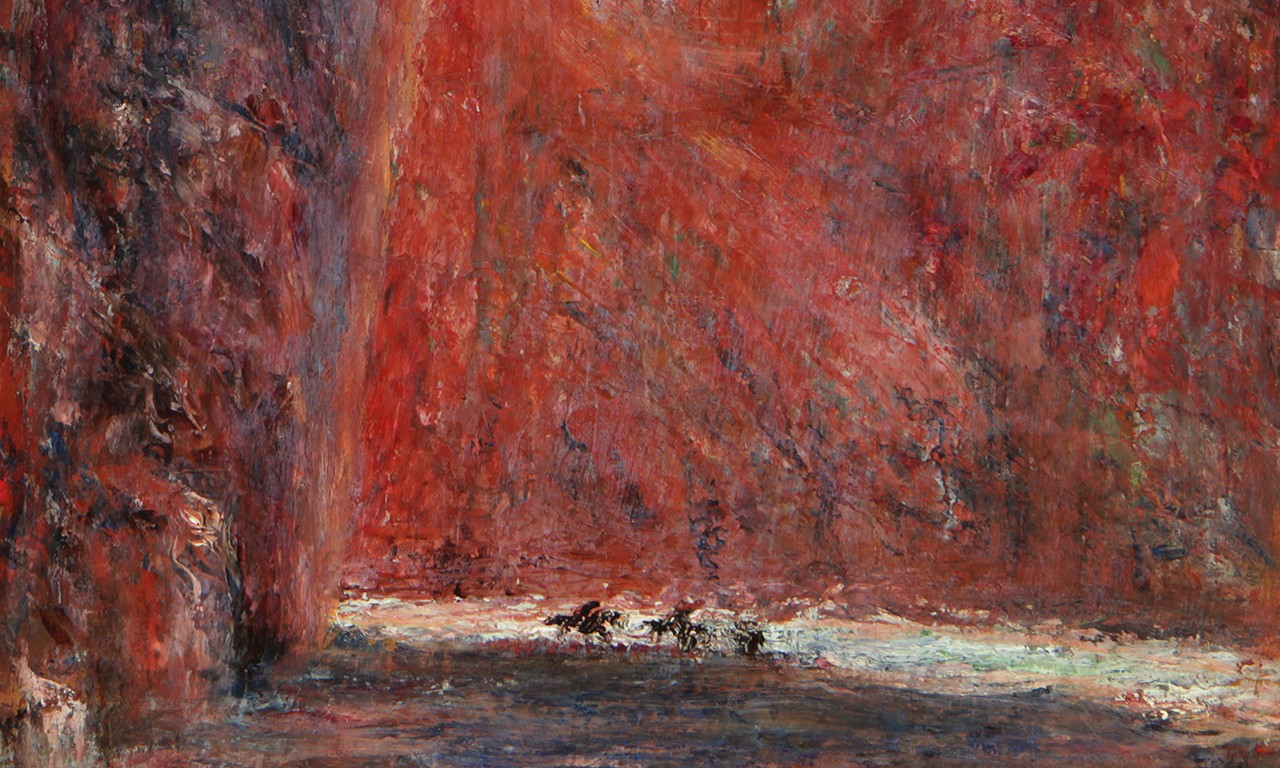 |
Detail of Untitled, c. 1919
Isaac Jenkinson Frazee (American, 1858-1942) after Edgar Alwin Payne (American, 1883-1947)
Oil pastel on wood; 12 x 9 in.
30365
Isaac J. Frazee Collection |
A Life of Service
Of all the early settlers to Laguna Beach who helped turn a tiny community into a major colony for the arts, perhaps none of them is as complex a figure as Isaac Frazee. His talents are many, and include painting, pastel, writing, poetry, and theater. More than anything, he lived a bohemian life; one that sets him apart from his contemporaries in ways that this post can only scratch at. In honor of the final week the California Art Club’s 111th Annual Gold Medal Exhibition, the Bowers Blog offers a survey of Frazee’s work in the Bowers’ collections.
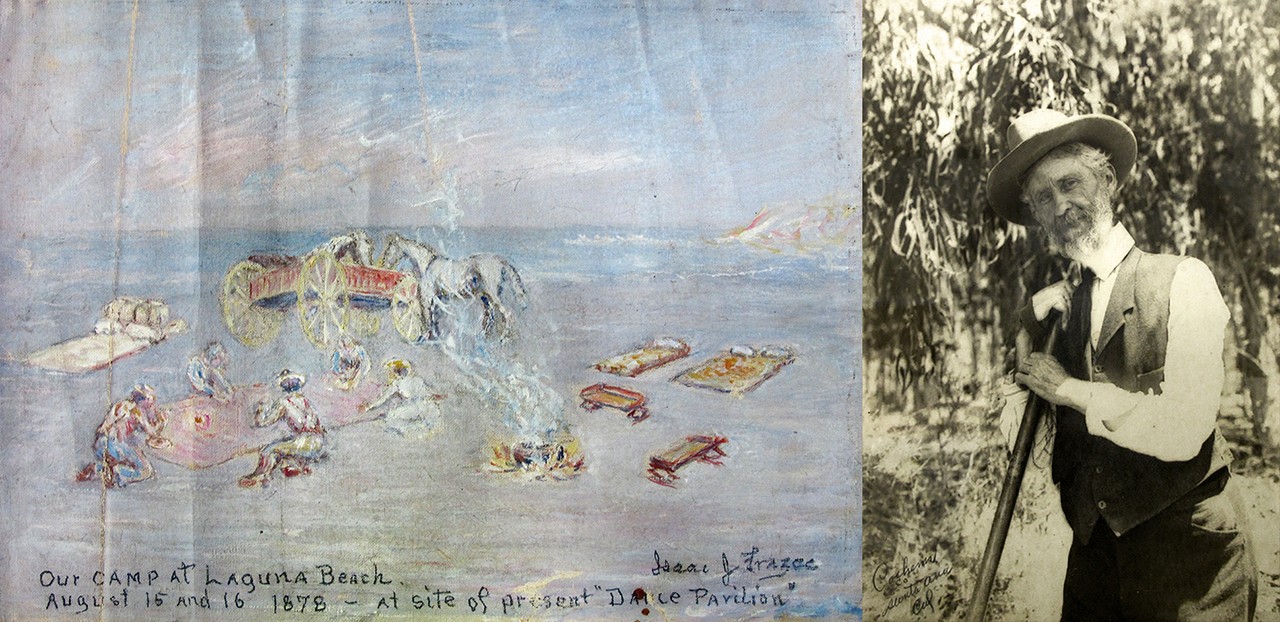 |
Our Camp at Laguna Beach, 1938
Isaac Jenkinson Frazee (American, 1858-1942)
Canvas and oil; 12 1/4 in.
20407
Gift of Elizabeth Frazee Worsley and Christian A. Worsley |
Isaac Jenkinson Frazee, 1927
Edward W. Cochems (American, 1874-1949); California
Photographic print; 15 x 12 x 1 in.
20405
Gift of Elizabeth Frazee Worsley and Christian A. Worsley |
Kentucky Dervish
Isaac Jenkinson Frazee was born in Winchester, Indiana in 1858. At a relatively young age, Frazee’s family moved to Louisville, Kentucky where he studied under Charles Boyd as a teenager. When he was 15 years old, the family again pulled up stakes and made their way out to San Bernardino, California. In 1878, already instilled with a predilection for sketching, Frazee traveled to Laguna Beach and made what experts call the first artistic depiction of the area. Though Laguna was already a popular summer tourist destination, it would not become a city for almost another decade. The sketch in this post was done by the artist sixty years later, in 1938, and is the beach as he recalls it appeared during his first trip there.
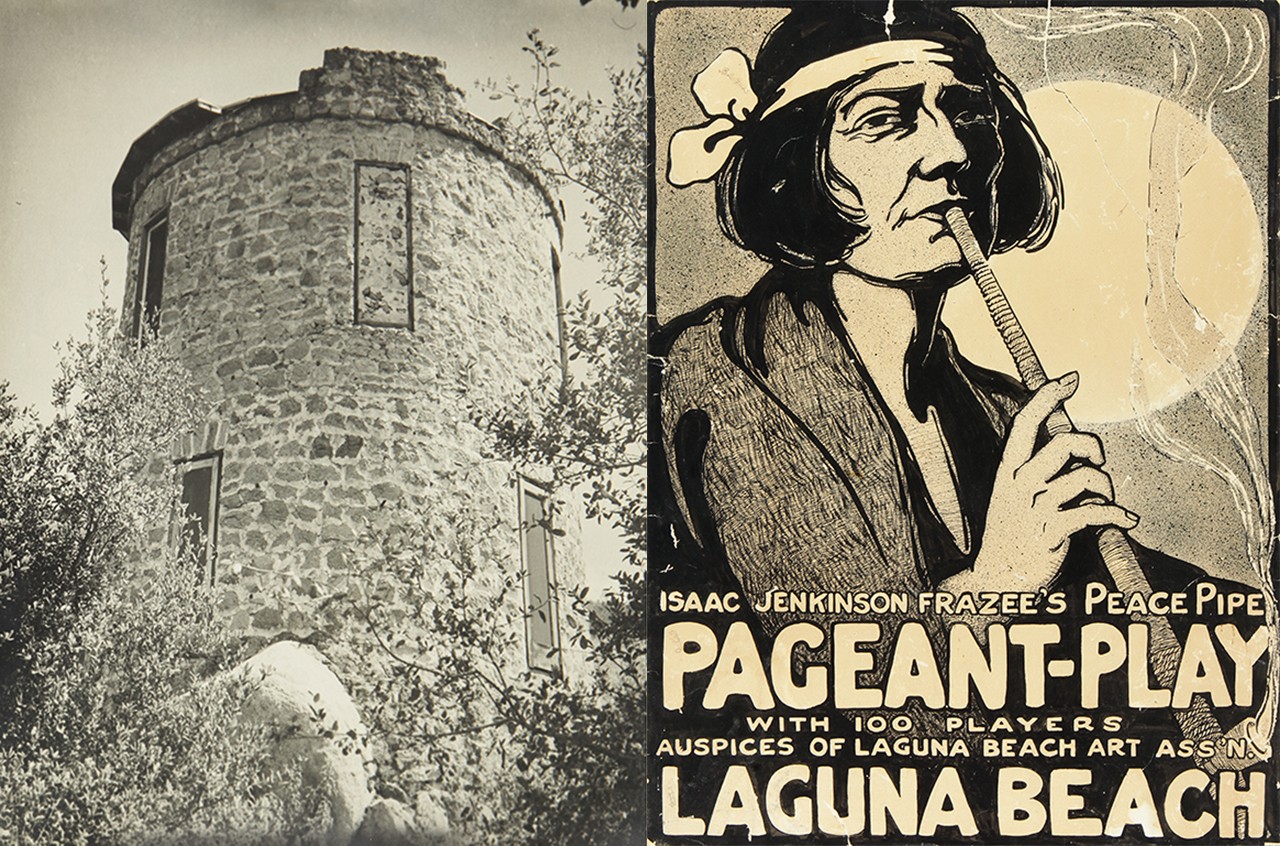 |
Woreland Tower (Frazee Castle), early to mid 20th Century
Unknown photographer; Moosa Canyon, Valley Center, California
Photographic print; 4 x 11 in.
20445
Gift of Elizabeth Frazee Worsley and Christian A. Worsley |
Peace Pipe Pageant-Play Poster, 1921
Elsie Philippa Palmer Payne (American, 1884-1971); Laguna Beach, California
Ink on paper; 13 1/2 in.
20409
Gift of Elizabeth Frazee Worsley and Christian A. Worsley |
Pageantry for the Ages
In 1873, Frazee married Bettie Worsley and the pair moved to Los Angeles. The young, social Frazees had a flair for events and hospitality, and began to form a tight-knit network of local artists. Around 1888, Frazee was asked to sketch the crime scene of a grisly shootout in Moosa Canyon, just inland from modern-day Oceanside, and defying all expectations fell in love with the area. When the owner of the property sold the land less than a year later, the Frazees purchased it and built a Scottish-style castle in homage to his family’s heritage. This odd structure, originally named Warland Castle for the massacre that had occurred there and later renamed Woreland (perhaps for his wife’s maiden name), became the home of countless artistic social gatherings. Isaac, Bettie, and their seven children would enact a theatre production of their own creation every year on Woreland’s natural amphitheater. The most popular, titled Kitshi Manido or Pamoosa’s Peace-Pipe Pageant Play, was performed in 1915 and 1916 and attracted thousands of visitors, free-of-charge. Around 1926, no longer able to maintain the massive property on their own, the now-older Frazees moved to Laguna Beach, where they continued to entertain and promote local art. Even before moving, in 1921, and again in 1928, they rehashed the success of their outdoor pageants in Laguna Beach in order to help raise funds for a new, artist-run gallery there—these events are often cited as the impetus for today’s Festival of the Arts and Pageant of the Masters in Laguna Beach.
|
|
Canyon de Chelly, 1916-1919
Edgar Payne (American, 1883-1947); Apache County, Arizona
Oil on canvas; 26 x 32 in.
Private Collection |
Untitled, c. 1919
Isaac Jenkinson Frazee (American, 1858-1942) after Edgar Alwin Payne (American, 1883-1947)
Oil pastel on wood; 12 x 9 in.
30365
Isaac J. Frazee Collection |
Payne-ful Resemblance
Frazee was a celebrated, cerebral artist. He had many friends among the early, famous painters of California and the West, not the least of which was Edgar Payne. One of Frazee’s works in the Bowers collections is an untitled drawing of riders tearing through a sandstone canyon. Based on an inscription on the reverse, the artwork is a sketch of a 1916 to 1919 painting by Edgar Payne that was owned by Frazee. Its title, Canyon de Chelly links it to where it was painted by Payne in northern Arizona. While Payne’s piece is detailed and precise—riders coolly plot their course through the shade offered by the terrain; an Anasazi ruin is nestled at the base of an imperious rock face—Frazee’s drawing is anything but. The canyon walls seem to undulate like the ocean in storm and the scene instills the frenzied urgency of the riders in the viewer. Though the composition is largely the same, their likeness is easily missed when not viewed side by side.
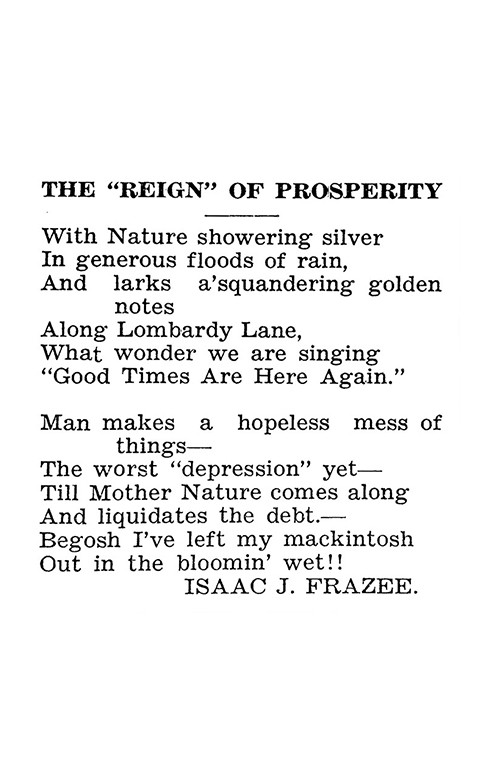 |
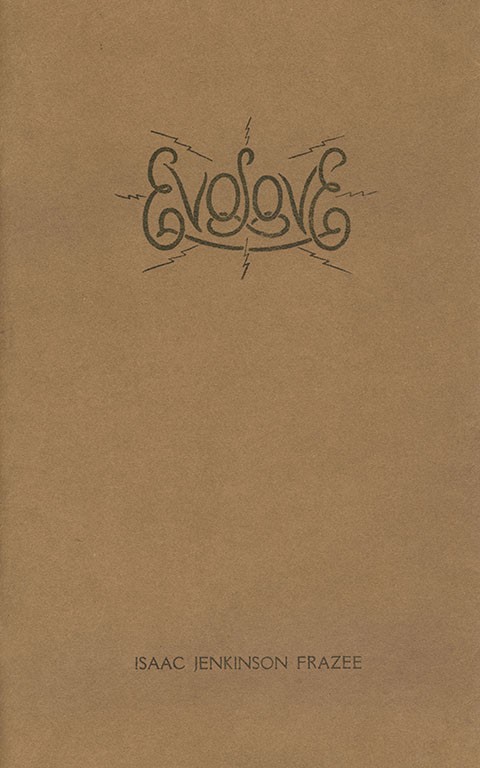 |
The "Reign" of Prosperity, c. 1934
Isaac Jenkinson Frazee, (American, 1858-1942)
Ink on paper
20439.51
Gift of Elizabeth Frazee Worsley and Christian A. Worsley |
Evolove, 1929
Isaac Jenkinson Frazee, (American, 1858-1942); Laguna Beach, California
Ink on paper
20453
Gift of Elizabeth Frazee Worsley and Christian A. Worsley |
Woreland; or, Life in the Canyon
Visual arts were just the tip of the iceberg for Frazee. His skill in writing, evidenced in the Bowers’ collections by several books and an assortment of poems published in local newspapers, shows him to have been deeply contemplative and unsettled by the world he lived in. Like Thoreau before him, Frazee advocated for a departure from the daily grind of work, proponing instead a measured return to nature. His philosophy was a celebration of Native American ideology, which he interwove with Christian teachings in books like Evolove (1929). The title is a mixture of words ‘evolution’ and ‘love,’ and a palindrome to boot. It was a timely publication, especially as Americans whose entire lives revolved around their jobs lost everything with the Great Depression.
Frazee passed away in 1942. Because he did not sell his paintings, today his name is little recognized outside of those well-versed in Orange County history. All the same, it was not by coincidence that he either started or was present at the onset of so many important spaces for the arts. His bohemian lifestyle made it so.
Text and images may be under copyright. Please contact Collection Department for permission to use. References are available on request. Information subject to change upon further research.






Comments